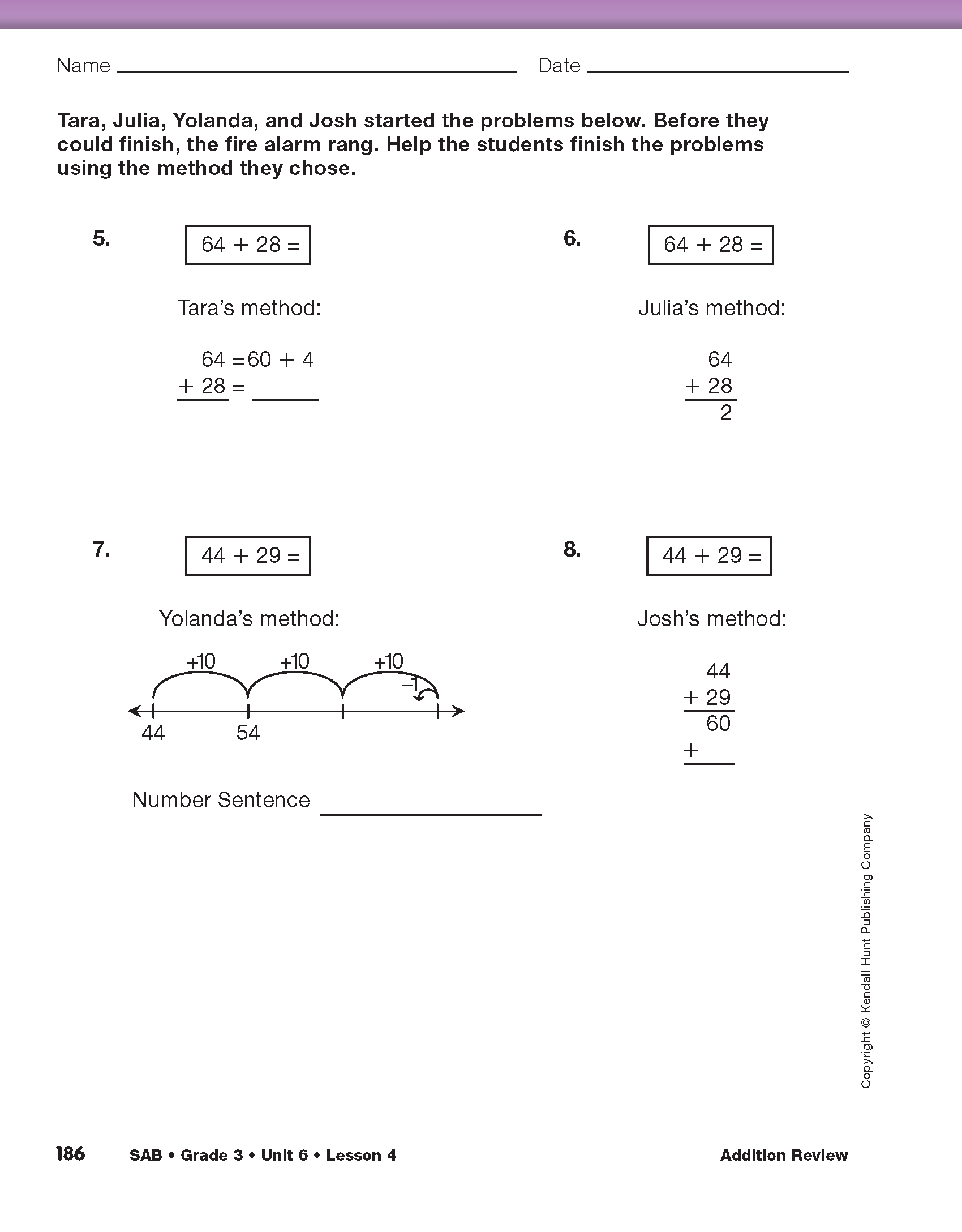Addition Review
Est. Class Sessions: 2–3Developing the Lesson
Part 5: Refine Collection of Addition Strategies
Compare Methods. Assign Questions 1–4 on the Connect Addition Methods pages in the Student Activity Book. Ask students to solve two problems using the all-partials methods and two using the compact method. For Questions 5–8, students complete problems using four different methods with a partner.
When students have completed the four problems, ask:
Add to Collection of Addition Strategies. Use additional sheets of chart paper to add these two paper-and-pencil strategies to your collection of addition strategies. Label one chart “Compact Method” and the other “All-Partials Method.”
Introduce the Addition Strategies Menu. Show a display of the Addition Strategies Menu Master. See Figure 15. Refer students to the Addition Strategies Menu page in the Student Activity Book. Ask students to compare the strategies on the menu to the strategies collected, discussed, and posted in the classroom.
Ask:
The Addition Strategies Menu has a blank box. Students can add their own invented strategy or reference another strategy here. Identify a mental math strategy with a cloud or a thought bubble.
Now that they have several addition methods in their collection and the Addition Strategies Menu to summarize those strategies, students will be able to begin to explore which strategies work best in different situations and choose appropriately from among mental math, estimation, and paper-and-pencil methods to add whole numbers.
When all desired additions have been added to the menu, ask:
Possible student responses are below.
- If the numbers are small enough or if I do not have to make any trades, I can picture Tara's method in my head. I just add the tens to the tens, add the ones to th e ones, then add the tens and ones together. But, there is a lot to write with this method.
- Julia's method is quickest and easiest as long as I remember to trade ten bits for one skinny and add the extra skinny with the other tens.
- I can do Yolanda's method in my head or just by looking at my class number line.
- Josh's method is a lot to write, but I understand it and I don't have to worry about making trades in my head like in Julia's method.















